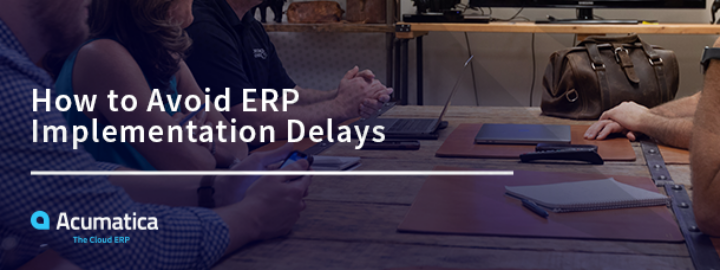The cloud ERP implementation journey has many steps, but step seven in Acumatica’s eight steps to implementation success may be the most important and most overlooked step of them all.

For those who have been following our cloud ERP implementation series, you will be glad to hear that we have reached step seven of our eight steps to implementation success: Developing a training plan. Getting to this step requires time and effort, but the result is a successful cloud ERP deployment and becoming a connected business—which is well worth it.
Review of cloud ERP implementation steps one through six
Before we look at developing a training plan, let’s quickly review the steps (and pre-steps) that lead to it.
The very first thing that must happen before a cloud ERP implementation can even begin is securing leadership and IT buy-in; nothing will move forward, let alone get off the ground, without their support. This is Pre-Step A.
Pre-Step B is making your ERP selection, which involves (you guessed it) time and effort to thoroughly research your cloud-based ERP options before choosing the best one for your business. Because you’re here, we’ll assume you have chosen Acumatica’s award-winning and comprehensive cloud ERP software.
As an Acumatica customer, you will have an expert Acumatica partner help you through every step post pre-steps. In order, the steps are choosing your deployment options, assembling your implementation team, defining your requirements, developing a Project Plan, migrating your data, and developing a test plan.
With Pre-Steps A and B and steps one through six completed, it’s time to develop a training plan. Why? If training your team is given little or no attention, then the time and effort (and money) spent on a cloud-based ERP solution that brings every aspect of your company (financials, customers, sales, and more) under one, cohesive system will have been wasted.
Step seven: Developing a training plan
To begin, the training is separated into two components: Subject Matter Experts (SME) Training and User Training.
In SME Training, members of your IT and financial departments who will be administering the system need separate training. These include superusers, system administrators, and database administrators. SMEs are required to know their subject area well enough to teach user training and be the go-to person pre and post go-live.
In User Training, all users of your new Acumatica system will learn how to perform their roles. Users will include members of your financial team as well as members of sales and marketing, field services, warehouse, shipping and receiving, and any other department who will be using the system. If the new system introduces new company procedures, these changes should be incorporated into the training.
Acumatica customers won’t be embarking on this journey alone. An Acumatica partner will be on hand, providing direction and answering questions. Your partner will tell you the importance of creating standardized user training plans. New employees and employees promoted into new roles will learn how to use the system the same way.
Set your team up for success with Acumatica cloud ERP
Training your team on how to use the system from the get-go will set you and your team up for unqualified success. Training every employee, from the top down, results in many benefits, including increased productivity as old, inefficient processes become obsolete and users buy-in.
International Pipe & Supply, LLC implemented Acumatica and their boost in business was partially due to their employees knowing they had the training and support they needed to be successful. Says Chief Strategy Officer Scott McCalla, “The users were so tired of the old system. Once they realized how intuitive Acumatica is and discovered that if they got lost, there’s help available on each screen, so they weren’t going to get stuck, the buy-in was there.”
Acumatica also provides further training assistance through:
- Acumatica Open University, Acumatica’s free online training course covering all of Acumatica’s capabilities and modules
- Free Acumatica documentation online
- Built-in User guide for self-paced learning
With Acumatica, every person will be able to access a single source of truth from any location and at any time. The system rests upon Acumatica’s flexible, open platform and allows seamless integration with third-party applications. Information is synced between every department and business application, taking decision making based on incomplete, outdated data to decision making based on real-time, accurate data.
If you would like to find out more about Acumatica’s affordable, mobile, and integrated business management solution as well as more about how we handle ERP implementations, contact our team today.
Stay tuned for the final step in a successful cloud ERP implementation: Going Live.














